#roger deakins is a genius
Text
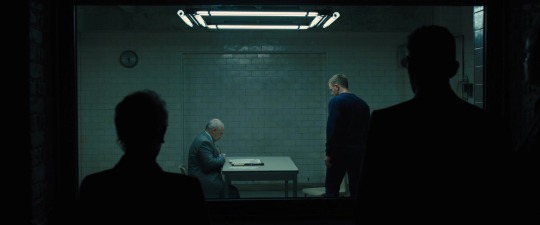


#james bond#skyfall#this looks exactly like the scene in the game#“I choose him ”#hitman#agent 47#diana burnwood#diana/47#roger deakins is a genius#this is getting extremely strange#hanna#marissa wiegler#hanna heller#hanna amazon originals#parallel
32 notes
·
View notes
Text
Every Marvel Cinematic Universe TV series to date has had its own distinct look and feel, from the sitcom-derived pastiche episodes of WandaVision all the way back to the grim-and-gritty, dimly lit street narratives of Jessica Jones and Daredevil. Marvel’s Loki has been one of the MCU’s more distinctive-looking series, though, from the dimly lit, industrial-brown corridors of Time Variance Authority HQ to the vivid neon city of Sharoo on the doomed moon Lamentis-1.
Series director Kate Herron confirms that some of these designs were directly inspired by classic science fiction, while others were more personal experimentation. We sat down with Loki’s cinematographer, Autumn Durald Arkapaw, to break down what went into designing some of the most striking and memorable sequences from the series’ first three episodes.
This interview has been edited for concision and clarity.
EPISODE 1: TIME THEATER INTERROGATIONS
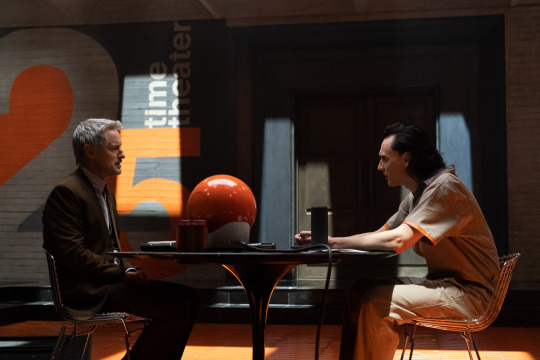
Autumn Durald Arkapaw: Kate [Herron]’s sensibilities led me to get the job in the first place. We shared those sensibilities, around noir films and more moody thrillers, so we were already on the same page as far as lighting and tone. So when it came to the Time Theater, Kasra [Farahani], the production designer, did a fantastic job of creating a space that had a lot of opportunity to feel textural and moody, and create symmetry. I’m big on symmetry. I like to frame center-punched, keeping in mind the architecture of the room, and framing for the architecture and the people at the same time. Stanley Kubrick does that very well. A Clockwork Orange obviously came up in our discussions. Some of our main references were David Fincher’s Zodiac and Terry Gilliam’s Brazil, and the original Blade Runner, in terms of creating spaces that feel strong and weighted, with the people in them placed in a way where the conversation feels very heavy, so you’re paying a lot of attention to the lines, and where your eyes are drawn.
We did some lighting changes above, in the Brutalist ceiling. The lights move, so when we’re cutting back and forth, you see the lights change on the actors. We’re trying to time those movements to the dialogue. The editing was fantastic with that scene. We shot a good amount of coverage, and [series stars Tom Hiddleston as Loki and Owen Wilson as Mobius] play in that space a lot. So we’re trying to always keep it interesting, every time they go back there, changing up the lighting and the projections. That’s probably one of my favorite spaces in the show.
And then the acting, obviously — they’re riffing off each other, and you’re in the room with them and feeling the energy. It was very exciting. That scene was up front in our schedule, so Owen and Tom were getting to know each other in general. We got to watch that happen before our eyes, and it was very comical.
One of the most noticable things about that space is the harsh, rectangular overhead spotlights — Tom Hiddleston starts his interrogation under a spotlight, and when he gets angry, he moves himself back under it. How did you discuss that kind of blocking and framing?
The thing with Tom is, he’s a genius. He’s just a fantastic actor, The amount of things I could say about how amazing he is on set, and character-wise, the list goes on and on. You can introduce marks and let actors know where you’d like them to be for a shot, but that doesn’t necessarily mean that’s where they’ll go. Some actors like to be more freeform. But with Tom, I wouldn’t have to say “Stand under that light.” He just knows, and he’ll play off that because of the space. He walks in, sees how it’s lit, knows our agenda, and uses that in the character.
So there were certain moments where he asked, “Is this what you’re thinking?” or we would have a discussion. But mostly, he uses the environment around him to tell the story as well, and he took in that lighting as part of the character. Actors know how they look in certain types of light. He’s very good at that. So he played with that in that space, for sure.
When we pull back and take in the whole room, the lighting feels punitive — the striped shadows are noir-movie standards, like light coming through blinds, but they also feel like prison bars. Is that something you discussed?
We never talked about prison bars, but in designing that space, Kasra was thinking about what that space was — being arrested, and being judged. It’s a claustrophobic space. Loki is slightly free to communicate and move around, but the walls and ceiling are concrete, there’s this fake light coming in, because obviously, in the TVA, there’s no day or night. You can see the light moving above, but there’s no sun there. It’s just moving at certain moments.
I had an idea, after seeing the latest Blade Runner, where Roger Deakins moves the lights around: Why don’t we have the lights move? It’s not easy to have big tungsten light sources above a ceiling set move like that, because it takes heavy motors. But my gaffer and key grip are amazing, and they figured out a way we could move the lights without causing shadows between each of the sections of lighting. It looks all like it’s moving at the same time. That took a lot of thought, getting those lights to move, and not just creating shafts of light that fade in and out. I think it helped a lot, because it’s very subtle. You’re only going to see it as they’re sitting. You’ll see sometimes the light moves from Owen’s shoulders into his eyes at the right moment, when you get lucky in the edit, and catch it at the right moment. It was great to have the resources to actually do stuff like that.
EPISODE 2: THE ROXXCART VARIANT PURSUIT
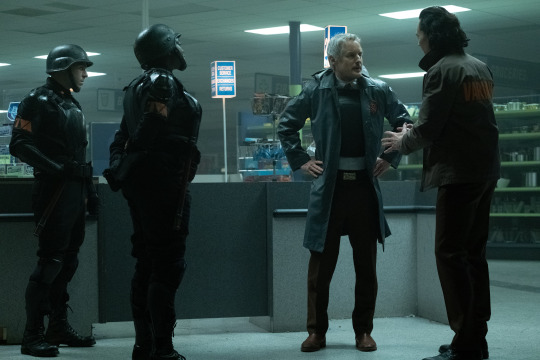
I’m a fan of green. If we’re designing a clinical environment, or a shopping mall, and we’ve got overhead fluorescents, I like to use cool white fluorescents that have kind of a green kick. I’m a big David Fincher fan, and there’s an undertone of green in his setups that I appreciate. So Roxxcart is a bigger shop that is now closed down, and Kasra outfitted it like a big-box Costco-type place? That wasn’t a full set — we went to this big warehouse, and he made it feel like that kind of store.
Above the space where we shot in, there were a bunch of fixtures. We completely removed those and put in our own tubes. They were RGB, and we could fade them and turn them off and on to our liking, flicker them, make them red when we wanted. When they’re cool white, I appreciate that green kick. I did a lookup-table color correction as well, to give it that tone. It’s meant to be clinical, but make you feel like you don’t know what’s at every turn. And we’re keeping lights on or off depending on which way we’re looking. Kate was a big fan of that space being very dark, with pockets of light. Our antagonist is supposed to come out of the darkness as people change identities.
We’re also trying to make that space look bigger than it actually was. We’re creating depth with light. That was a bitch to shoot — we had so much rigging. My team was amazing. If you go into a space like that, a Target or something, you’d think “The lighting here is not that big of a deal. It’s just overheads.” But being able to control all those overheads and make them different colors and flicker them takes a lot of rigging, with a dimmer board and the programming. In the editing afterward, it really does feel like a space that’s a lot bigger than it actually was. The red sequence is one of my favorites, for sure.
The camera is below waist level a lot in that sequence. What are you communicating there?
I always like to shoot low! It’s just how I see things. Some of my favorite films are detective thrillers from the past, Zodiac being one of those. I’ve always just loved shooting below the eyeline. Obviously there are moments in features I’ve shot where I want to be higher, because it’s more emotional or romantic or something. But in this kind of story, where you have these amazing spaces, and you have multiple characters you’re trying to frame, all facing off and being strong, I’m just a bigger fan of seeing a ceiling than a floor. It’s an appreciation I have, as far as it feeling more mysterious. When a character is looking more mysterious, and you’re not trusting them, you’re trying to figure them out, I love that kind of framing. It’s amazing.
EPISODE 3: FIGHTING TO REACH THE LAMENTIS-1 ARK

That sequence has a great backstory. I did a lot of prep with Kate. We started prep in Los Angeles before we ended up in Atlanta. We knew that sequence was coming up. but in the script, it just says “Okay, so they end up at Sharoo, and then go on.” The description of that sequence went through an evolution, with the filmmakers discussing things, building the set, and collaborating, so early on, we spitballed about what we thought that could be. Having the support of Marvel and being able to build, and being able to do great stunts, we went bigger.
With the sequence as it evolved, Children of Men was a big reference for us. Kate was really interested in that feeling. She wanted to be with the characters the whole way. We tried to figure out, should the camera be handheld? Should it be Steadicam? We ended up with Steadicam. We looked at some previous oners, because we wanted this sequence to feel like a oner to the audience. Obviously, there are cuts in there, but we seamed certain shots together so the audience wouldn’t feel as though we cut. The intention was to feel like you’re on the run with Loki and Sylvie, racing to the ark, building up tension. You’re there with them as they’re fighting.
My husband’s a DP, and he shot True Detective season 1. That oner in True Detective was something we looked at as well, because it’s just one of those great oners that feels real and has those kinds of textural elements. We did pre-viz, we did rehearsals in the space, prior to shooting there. We went there a couple times and did camera rehearsals. We had an amazing Steadicam operator who I’ve worked with on my last four projects and features. He’s very in tune with my eye, and he’s great with those kind of moves. Kasra understood that we needed certain paths to go down, to help us get from point A to point B, so it feels like a run, it doesn’t feel like people keep entering the same space. Obviously, it’s hard to build really big sets where you can go very far. So he did a great job of knowing what we needed, and then adding stunts, and figuring out how we could feel like we were turning corners whenever we’re moving into different spaces.
How big was the physical space? How much of what we’re seeing there is digital?
Shiroo was very different from Roxxcart. At Roxxcart, we had blue at the end of the aisles, so they look like they’re going on a lot longer than they are. But we traveled to that space. It wasn’t built. Shiroo was built on a backlot. That was a set we had full control over, to build to our liking. Above a certain point, as you’re looking up at the buildings, that’s VFX. But we built the actual buildings up to a certain height, and then beyond that is a digital extension. As far as the depth as well, beyond a certain part of the street, it’s a digital extension. Obviously, the ark is an extension, and we’re using the explosions as cues to do a lot of lighting cues. But it was a very big set, a gorgeous set. It has a lot of texture.
Kasra had the idea of painting a lot of the set in black-light paint, which I’d never seen before, and putting black lights everywhere. Also, we had a bunch of units on top that lit the set for the moon color and those sources, and we had VFX helping us stitch it all together. We had to shoot the sequences and look at the overlays on set to make sure we were creating matchups that would work in the final edit.
For me, that’s a very successful collaboration of in-camera elements — that whole set was real — and having explosions on set along with lighting cues, and then the effects to seam it together and do the extension above and the depth. So everyone really had to play like a good chunk of that. But they’d be effects overall, I think taking what we shot and making it feel like something that big, you know, the buildings are falling. Obviously, we didn’t drop buildings on people. There’s some foam stuff. That was really fun. We shot all that stuff at night.
The camera work in that sequence is some of the most dynamic movement in the series. What was the most difficult part about coordinating that sequence for you?
Rehashing it now, it was the prep. When we were actually there in the space with Tom and Sylvie, running through all of this stuff, it really made sense by that time. We’d been pre-vizing it and reworking it and massaging it for so long that ultimately, once we got on the set and had to follow them with the camera, and the energy was going, and we had the extras there, it all fell together. I think one day, we even wrapped a little early, because we’d just nailed it. When you’re prepping those types of shots, in your mind, you’re always like, “This is gonna be hard, it’s going to be difficult to seam these together, I like perfect headroom.” And you also want it to feel real, and people have to jump and fly and tumble into the frame. But on the day, our execution ended up being pretty good. So that was the most surprising thing to me, because it was kind of a pain in the ass prepping, because there are so many elements. And we’re doing six episodes, so we’re always working, trying to chase the next prep. But it really fell into place nicely.
62 notes
·
View notes
Photo

CRITERION COLLECTION SPINE #1035: COME AND SEE (directed by Elem Klimov)
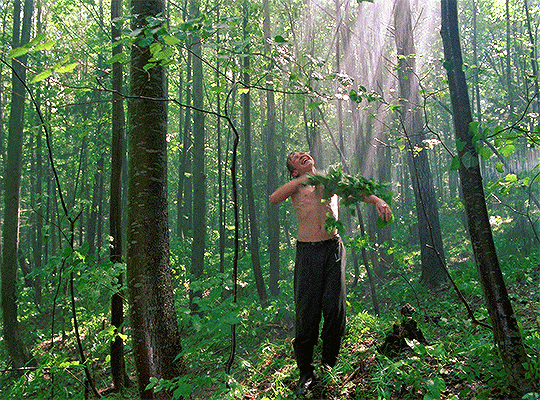


I don’t really know how to put in to words what I’m feeling or thinking after seeing this movie. I knew, going in, that it was going to be difficult and emotional - but even so, this was a profoundly moving and life changing experience that I couldn’t have anticipated or prepared for. Even now, I’m trying to compose my thoughts and write a semi-coherent review, but each time I stop and think of the movie I find myself in a rabbit hole of thought. Okay. Let me try and just get a little bit out of my brain here.
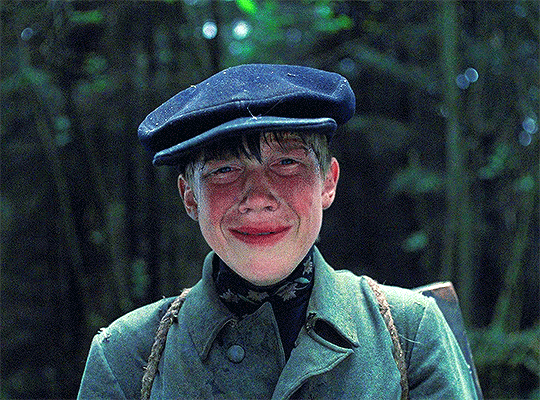


First of all, this has to be one of the best child performances I’ve ever seen. I looked it up, and Aleksey Kravchenko was 14 when this film started shooting. He’s able to convey such a wealth of emotions and as the film progresses and we see him experience horror after horror, there is no doubt in your mind that he is really going through all of this. You don’t see an actor, you see a boy standing in the middle of hell. In fact, nothing in this film seems fake or cinematic - it’s all presented so realistically and brutally. However that is not to say it isn’t cinematic. The cinematography and camera work are gorgeous, with many sequences feeling almost dreamlike. It’s Roger Deakins’ favorite film for a reason.



Without spoiling anything, the FIRE SEQUENCE is probably one of the most brutal scenes I’ve ever seen on film. It’s disgusting what The Nazi’s did to innocent villages. It truly made me think about the psychology behind Nazism and just how average, everyday citizens were able to get behind a regime like Hitler’s and commit acts of such atrocity. So evil. It truly baffles me. And to think that there are those in the US, like we saw in Charlottesville, that flew the Nazi flag and shouted Anti-Semitism from the streets. Absolutely and violently deplorable. My heart hurts after seeing this. It really does.

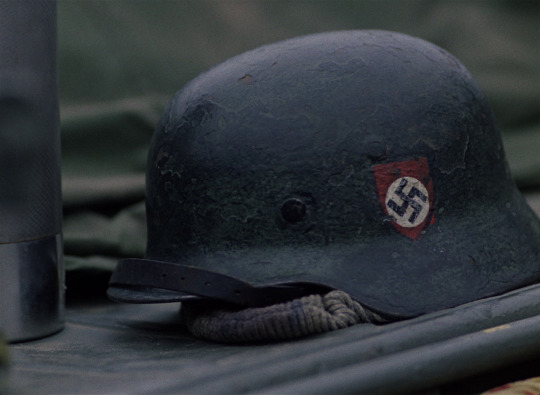
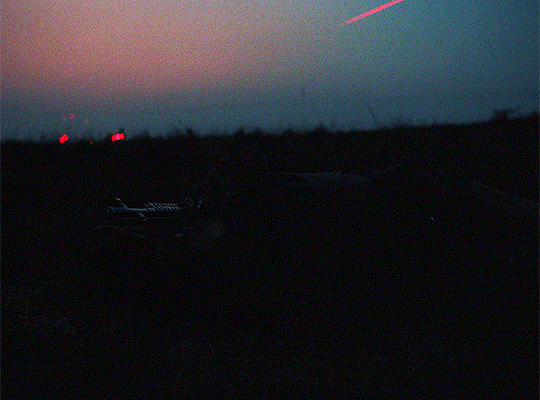
Also, the last five minutes or so are truly genius filmmaking. Again, I won’t spoil anything, but if you’ve seen the film you’ll know what I mean. The “historical rewind” sequence when the boy is shooting the picture of Hitler is like hypnotic and jaw dropping. And, it’s moments like these that crop up in the film elsewhere that truly make the movie stand high above the shoulders of other anti-war films, or just films in general. Elem Klimov is able to mix hyper-realism with surrealism and existentialism. It’s almost like watching a documentary on LSD, or waking up in the middle of a dream but still seeing the remnants of the dream in real life. Films like these are worthy of entering the ranks with other auteurs such as Bergman, Tarkovsky, and Kurosawa.
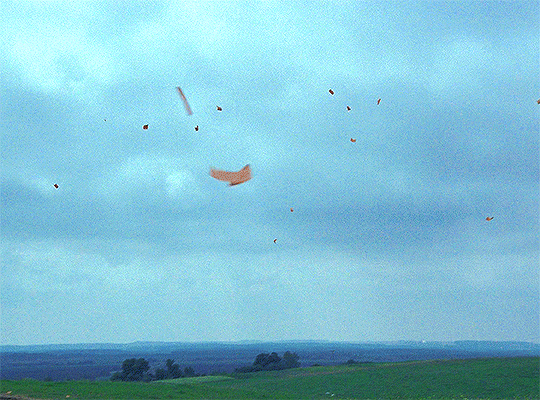

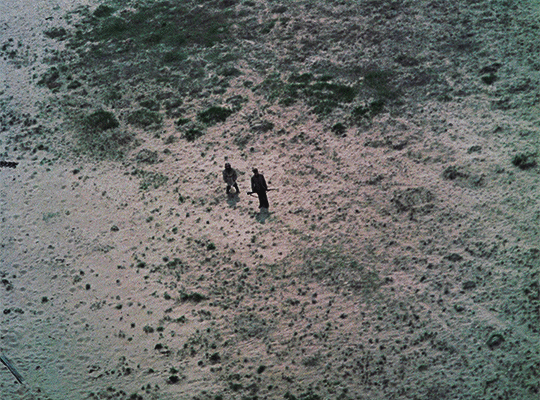
There’s so much more I could say. The brilliant use of Mozart’s Lacrimosa at the end, and what that means. The stork popping up throughout the film. The ending message of youth and children during wartime. It’s a very intellectual film if you dig deeper and deeper. But as Roger Deakins says in a wonderful interview, even if you disregard the intellectual messages of the film, it’s still just a horrifyingly powerful movie that leaves you with such a complexly solemn and bare feeling at the end. Watch this film. Reflect. Learn. History like I this must never, ever be allowed to repeat itself.


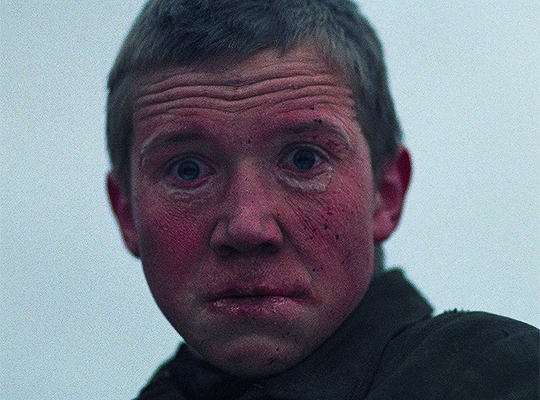
Find me on Letterboxd: https://letterboxd.com/michaelzak/
#film#movies#film review#movie review#the criterion collection#the criterion channel#criterion collection#criterion channel#come and see#idi i smotri#elem klimov#russian cinema#80's movies#World War Two#nazi#war cinema#best movies#greatest films
15 notes
·
View notes
Text
Top 5: Best Films of 2019
2019 was another momentous year for me - spent the first half of the year living at my in-laws house while we waited to move into our forever home, then spending the back half of the year doing house projects as we slowly unpacked. We weren’t consistently heading to the cinema, but we’ve done a race to fit in many more films before the Oscars, which was held this past weekend and where Parasite made history as the first foreign language film to win Best Picture. This is my second year in a row publishing my thoughts on ranking the past year in cinema, so despite the many life changes, excited to keep the tradition going.
Gibelwho Productions Presents Best Films of 2019
5. Marriage Story
4. Parasite
3. Little Women
2 Jojo Rabbit
1917
Marriage Story (November 2019): The film, written and directed by Noah Baumbach, explores the unraveling of a marriage, where the two people are navigating their way through divorce and must forge some sort of ongoing relationship for the sake of their son. The story is an exploration of identity - being part of a couple, emerging as an individual, surviving as a parent, and balancing one’s career. Scarlett Johansson and Adam Driver shine in their performances, finding the truth in each scene, displaying the humanity of flawed people, and really going at it during their epic meltdown fight. The supporting cast is stellar as well, delivering moments of humor, ugliness, and empowerment - notably Laura Dern’s speech about society’s different expectations placed on mothers and fathers. Filmed on location in New York and Los Angeles, the story casts a devastating eye on how two people who have separated can still retain some love in the face of heartbreaking agony.
Parasite (October 2019): A film that starts off as a comical exploration of a poor family slowly infiltrating the house of a rich family in Seoul, then shifts halfway through to become a suspenseful thriller with sequences of violence. Co-writer and director Bong Joon-ho explores the nature of the upstairs / downstairs dynamic, not only having the story center on those in service of the rich family, but also with the production design of the two houses featured in the film. The rich family lives far above the main streets in a multi-level home, with stairs that lead up to a beautifully manicured garden; the poor family’s living quarters is in the lower section of town, they live below the streets, and must contend with the danger of flooding. Avoiding spoilers, a third set of staircases hold a secret that ultimately spells danger for both families. This film has made Oscar history and has opened more people up to the world of International cinema; as Joon-ho said so eloquently in one of his acceptance speeches: “Once you overcome the one-inch tall barrier of subtitles, you will be introduced to so many more amazing films.”
Little Women (December 2019): Adapting a classic novel for the modern era, especially one that has been relatively recently brought to the silver screen, one must insist on bringing an original take - or why else bother. Writer and director Greta Gerwig not only took on that challenge, but elevated the material to a higher degree than has been achieved in previous adaptations. Splitting up the linear story into two timelines allowed a commentary on the past and present that gave more life to the characters and depth to their journeys. Having never read Little Women, I was enchanted by discovering these characters brought to life by a terrific ensemble, including Saoirse Ronan, Florence Pugh, and Timothee Chalamet. Additionally, Gerwig pens an ambiguous ending that will satisfy book readers who felt betrayed by character turns that Louisa May Alcott felt pressured to deliver for publishers in 1868, but that didn’t feel true to her character’s spirit.
Jojo Rabbit (October 2019): Imagine writer and director Taika Waititi pitching his adapted screenplay to studio executives: a story that centers on a young boy growing up in Nazi Germany, who attends the Hitler Youth camp, and whose invisible friend is Adolf Hitler himself. Oh yes, and it will be a comedy, tragedy, hopeful, heartbreaking, hilarious, and shocking - dancing between the shades of tones and the audience will follow along with each beat. What makes this film succeed is the casting of Roman Griffin Davis, who despite his love for swastikas, steals the heart of the viewer with his earnest innocence and hilarious delivery, along with his interaction with his little friend Yorki (Archie Yates), his Hitler Youth leader (Sam Rockwell), and the Jewish girl he finds hidden in the upstairs bedroom (Thomasin McKenzie). Waititi is a genius filmmaker, who took all his Marvel Cinematic Universe clout and made a film about the dangers of youth growing up in the time of fascism, preaching an anti-hate message that the world needs to be reminded of in these nationalistic times.
1917 (December 2019): A film that centers on one technical conceit - that a full length feature film is constructed as one continuous shot - could fall under the weight of that enterprise, but 1917 delivers on all fronts - artistically, emotionally, and yes, technically. While the film is not actually one long shot, whole sequences are sustained for minutes on end, an environment more accustomed to theater actors than those working in film and one that brings a weight of reality to the character’s journey. Due to the story - two men must cross No Man’s Land to deliver an urgent message to a general that could save thousands of lives - the leads are constantly moving, through trenches, across the muddy no man’s land, through fields and streams, and finally the battlefield. The camera follows them through tight interior spaces and open fields, finding inventive ways to track their movements in the war zone. The two leads (George MacKay and Dean-Charles Chapman) deliver incredible performances as they slog through the countryside, encountering incredible British actors for short, yet powerful, scenes along the way. Co-writer and director Sam Mendes leads an incredible team that achieves cinematic glory and Roger Deakins proves for the second year in a row that he is producing the best work of his career. 1917 is not a traditional war film - through its formal choices, it endeavors to place the viewer directly inside the experience of soldiers in the First World War.
Honorable Mentions:
Knives Out (November 2019): A classic whodunit that involves a twist of all twists - solving the mystery halfway through the film; what can the movie possibly spend the rest of the runtime on? This is the genius of writer and director Rian Johnson - he somehow manages to ratchet up the tension and reveal deeper twists and turns that subvert genre expectations. A stellar cast supports the murder mystery, led by Ana de Armas, a lighthearted Jamie Lee Curtis who is chewy the scenery, and a broad performance by Daniel Craig as the lead investigator. Chris Evans’ winter sweater became the breakout star of the film and the production design included an epic knives sculpture that plays a vital role in the climax of the film.
Terminator: Dark Fate (November 2019): I am not a huge fan of the Terminator franchise - I’ve seen the first and second installments, but have skipped the rest of the sequels and never went for the television shows. I entered the viewing of this film with low expectations, and thus was pleasantly surprised by how feminist this film is. Linda Hamilton commands every moment of screen time, the enhanced human protector from the future was an incredible mix of strength and vulnerability, and even when Arnold enters the picture, he knows when to stand back when the women are in command. Yes, there is a totally ridiculous action sequence in a falling plane that defines reality and physics, but there are more moments of women communicating intelligently and emotionally and also women taking command and driving the action forward that fully impressed for what could have been a throwaway addition to the Terminator canon.
Avengers Endgame (April 2019): With this film, the MCU has concluded its first major story arc, wrapping up a 10 years long buildup of the Avengers and affiliated heroes fighting the Mad Titan Thanos in an epic battle. Yes, the film does build up to a climactic final battle, but it takes it’s time getting there, choosing instead to focus on how the character’s we’ve grown to love over the past decade deal with the Snap that killed friends and family and left the world a broken place. The plot really gets moving when a time travel element is introduced and, in one of several lovely tributes to my beloved Star Trek, brings the viewer back through memorable moments in the MCU’s history, layering on meta commentary or radically changing the shape of the past. This film was a bold risk to focus on character over spectacle (at least for a while) and to craft a fitting tribute for the two titans of the Marvel Cinematic Universe - Steve Rogers and Tony Stark.
Apollo 11 (March 2019): The American space program of the 1960s has long held a fascination in our household and so we rushed out to see the documentary that promised new footage for the seminal event that landed a man on the moon. To our delight, the film revealed itself to be a cinematic achievement as well. Director Todd Douglas Miller chose not to narrate the film with an omniscient voice; rather, choosing to fill the audio landscape with diegetic sound from contemporary source material - journalists asking questions in a press conference, back and forth between the astronauts and NASA headquarters, and newscasters reporting the progress to the nation. Some of the shots included in this film, all archival footage and some newly released 70mm material, are so beautifully composed and complex shots; it's an astonishment that this thoughtful filmmaking was done to capture one of the nation’s greatest achievements and this documentary honors that effort on its 50th anniversary.
43 notes
·
View notes
Note
Hi! I wanted to ask you what are your thoughts on the golfinch film. I got the book recently and then i watched the film, i kind of liked it, but only bc i read the book and knew what was going to happen. For me the main issue was the film jumped from past to present a bit weirdly and boris’s return, one of the most pivotal parts of the novel, only given a half hour. And the way the museum scene was dragged out, i could see how it would seem confusing to someone who has never seen tgf.
hello!! ohhhh boy do i have some THOUGHTS on this!! i agree with everything you said!! *spoilers*
i’ll start with the positives :)!! roger deakins truly blessed us with some breathtakingly gorgeous cinematography. the fact that they incorporated the colors of the goldfinch painting into the color palette of the film was a genius move and helped everything to feel visually cohesive. everything looked exactly how i pictured it when reading the book, which gave it that “pages brought to life” feel. i also really enjoyed the casting decisions too!! the film was visually appealing but it fell flat in almost every other aspect.
john crowley somehow vastly misunderstood a majority of the book... which as a director is extremely frustrating and sort of doomed the film from the start. the way he framed everything undercut almost every single important thematic issue. first of all, he showed absolutely none of the depth between theo and audrey. you barely get a sense that they were close at all... until the very end??? you don’t even see her face??? so why should we even care about the painting if we don’t get a sense of theo’s closeness with his mom... his suffocating grief is utterly diluted.
the proportion of time each of theo’s relationships/trauma are given also makes no sense. 30+ minutes with the BARBOURS vs. 10 minutes for all of amsterdam where he experiences TRAUMA with boris that leads to his suicide attempt.... how does that make sense!!! there is hardly any emotional depth in one of the most emotionally saturated novels i’ve ever read!! how does that happen?? even theo’s horrible addiction was barely touched on in the film... why???
the plot jumps are also awkward and make no sense because once you get invested in one theo... you’re thrust back to the other... totally screwing with the emotional impact and just confusing for anyone who hasn’t read the book. (also it shows adult theo back in ny before he even leaves las vegas... which kind of spoils that part?)
also in regards to theo and boris... thank god for the acting because mr. crowley did everything he could to no homo their relationship because somehow, in his mind, that would “diminish” its depth??? besides the fact that that remark is homophobic... IT’S JUST TEXTUALLY WRONG??? you can’t tell me theo and boris were just friends. it’s not even subtext (i mean some parts are) but it’s just flat out the text?? and theo’s repression is a huge part of his identity crisis?? possibly important idk...
i could go on... but i also need to give them some credit because ms. tartt wrote a 700+ page novel DRIPPING with extremely intricate plot points and DRENCHED in heavy themes so there was no way they were going to be able to fit everything important into a reasonable film format.
all in all, i’m not mad about the film. i personally enjoyed it even if it totally missed the mark. i watched it with my younger brothers (neither of whom have read the book) and they were like “i don’t get why it got such bad reviews... it wasn’t that bad.” and exactly!! it wasn’t that bad!! only people who have endured reading tgf are allowed to shit on the film.
#ask me anything#i’m sorry this is so long and rambly#i’m running on 0 hours of sleep and it’s 6:30 in the morning#i’ll probably reread this in a few hours and realize none of it makes sense :)#feel free to discuss further!!#the goldfinch
15 notes
·
View notes
Text
2. Blade Runner 2049 (2017)
Back in 2017 my dad asked if I wanted to go to the cinema to see Blade Runner 2049 and at the time I thought "yeah sure, sounds okay". So we drove to the nearest cinema and I think my dad was pretty excited for it because he loved the original from 1982. Unfortunately I hadn't seen Blade Runner before going in to see 2049 and while I liked it enough to give the original a go afterwards, I wish I'd gone in with the knowledge and exposition that the original provides, because there's not exactly a recap.
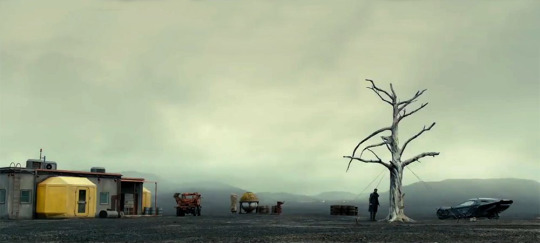
Blade Runner 2049 is nearly three hours long and despite needing to be in a specific mood to watch it, once that feeling hits, I am never even slightly bored for the entire run time. This is because Denis Villenueve is a genius. As the director of this film, he crafts something so gorgeous in basically every department. From the delicacy of the sound design to the execution of the hauntingly intriguing story itself, it’s quite honestly a challenge to look away.
Visually this movie is stunning as well; dripping with colour thanks to cinematographer, Roger Deakins who also delivers on scene after scene of memorable imagery.
The score is one of my favourites, composed by Hans Zimmer and Benjamin Wallfisch it conveys the atmosphere of each scene brilliantly and I often find myself going back to it.

If I were to say anything to anyone who has never even seen so much as a poster or plot description of Blade Runner 2049, it would be to first watch the original and then to watch this completely blind to any of the marketing or even the cover art for the dvd, blu-ray, or digital copy and you may just get exactly the kind of experience that was intended from the movie, because the real shame of this is how it was marketed and sadly I don’t know how possible it is to go into this completely spoiler-free. Nonetheless, this is still a spectacular sci-fi adventure, the likes of which I’ve never seen in cinema before or since. Ryan Gosling is fantastic as K, a Blade Runner responsible for retiring replicants and suddenly caught up in a mystery that forces him to confront his entire being. It’s hard to compare his performance in this to something like The Nice Guys because of how different those characters are, but this may be my favourite from him.
This is entirely its own thing and while it’s not as good when separate from the original Blade Runner, it’s not trying to be a stand-alone movie by any means as it explores a lot of the same kind of themes, such as how we control our own paths, what it means to be human and how we look at those who're different to us, just in another way to the original.

Last time I watched Blade Runner 2049, I cracked open the blu-ray for the first time and it blew my mind. I cried. Though I also had partaken in a few drinks so maybe that’s why. Even so, this movie deserves my tears. It deserves the applause it’s been given because it could so easily have been another soulless addition to the growing pile of movies suffering from sequelitis. Luckily it was picked up by a team who cared about the property and wanted to do the original justice and I think they’ve done that and then some, carrying over the core themes and messages such as what it means to be human and how we sometimes treat those different to ourselves as less than.
1 note
·
View note
Photo


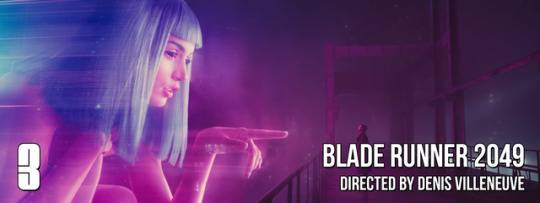
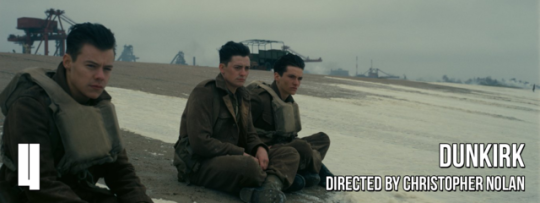
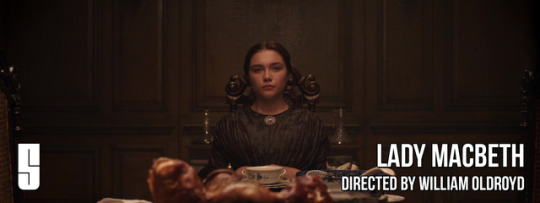

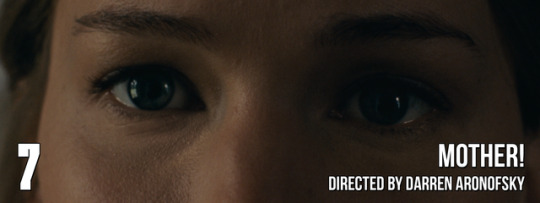



MY TOP 10 FILMS OF 2017
1. A Ghost Story • An idea I wish I’d had. A dead person comes back as a white sheet. Such a simple, almost childlike concept that makes for a painfully beautiful and profound meditation on life, love and loss. Some will find it silly and self indulgent (the 10-minute pie eating scene is both necessary and brilliant) but it has so many great elements to it, including the protagonist’s omnipresence which is subtle, very well done and ties the whole thing up nicely.
2. Moonlight • A fantastic execution of what is a very simple story. It looks and sounds great, and feels epic without anything overly dramatic ever really happening. Its ability to subtly avoid cliches and shift our expectations of the protagonist is brilliant. Some very good performances as well, it doesn’t matter that the three versions of Chiron look nothing alike - we believe they are the same person.
3. Blade Runner 2049 • A bloody good sci-fi film and more than worthy follow up to a classic. Obviously inspired by the original but very much its own thing. Visually it is incredible. Production design and cinematography (Roger Deakins is a genius) are both excellent and very creative. Some scenes are elevated just with an interesting and perhaps unconventional set and use of light within it. Ryan Gosling is essentially the perfect actor for the role and Villeneuve has once again made an awesome film. Makes me want to make a big sci-fi movie.
4. Dunkirk • Intense, inventive, unsettling and, at times, terrifying. The use of different time frames for the three parts was something of a masterstroke - a simple concept that is done so well that you forget about it until the film wants you to remember. The music and sound design was terrifically good at putting you right there in the action. Nolan is the best in the world at this type of film.
5. Lady Macbeth • A subtle and considered film that is played very well. The fact that we are made to sympathise with the protagonist from the start works brilliantly when the sympathy we have for her slowly but surely seeps away. Florence Pugh, who I haven’t seen in anything before, is awesome, I want her to be in all of my films.
6. On Body And Soul • Two people working at a slaughterhouse, a shy young woman and an older man who seems bored with life, discover they have been having the same dream. It leads to a great exploration of anxiety (and perhaps other mental health issues) and the difficulty it can bring to connecting with another human being. A strange but lovely, and at times emotional, film.
7. Mother! • Fucking nuts! An uncomfortable, anxiety-filled first half gives way to an ever increasing series of batshit crazy things happening. Both strange as hell and exhilarating at the same time. Never terribly scary but as it crescendos it appears to become something bigger than the self contained story it initially was. Many themes, some biblical, some about the nature of the creative mind, some about a relationship, and I'm sure many others. But really, other than Aronofsky, who the hell knows what is going on?
8. Call Me By Your Name • I only managed to see this at a screening today (31.12.17) so perhaps I need more time with it, but... it is very good, and everything in it feels very real. In other hands the characters could quite easily be rather irritating but instead they are relatable and funny and it is a joy to be in their company. The final shot is so simple, yet such a beautiful way to end it.
9. Manchester By The Sea • I was expecting a bleak drama and certainly got one. It is, at times, emotionally devastating. Casey Affleck is fantastic and plays depressed very well, never overdoing it. And difficult though it was, I didn't want it to end, I really felt for the characters and wanted to stay with them longer.
10. The Handmaiden • A film in which you think you know what's going on, and then you think you know what's going on, and then you start to question everything, and then you think you know again but you're never quite sure. Executes the many twists and turns very well and mixes what is for the most part a rather dark story, with sinister undertones, with a really sweet romance.
Notable mentions: Baby Driver, The Big Sick, Clash, David Lynch: The Art Life, Get Out, The Killing Of A Sacred Deer, My Life As A Courgette, The Red Turtle, The Salesman, Toni Erdmann
#end of year list#top 10 films#2017#a ghost story#moonlight#blade runner 2049#dunkirk#lady macbeth#on body and soul#mother#call me by your name#manchester by the sea#the handmaiden
51 notes
·
View notes
Link
By Hoai-Tran Bui
The first thing you notice about Blade Runner 2049 is how stark it is. Opening in a desolate, grey field where Ryan Gosling‘s Officer K confronts Dave Bautista‘s Sapper Morton, the world of the Blade Runner sequel steadily unfolds into the cyberpunk mecca that we were first introduced to back in 1982.
It’s clear that director Denis Villeneuve and cinematographer Roger Deakins don’t want to ape the neon-drenched griminess of the original, instead delivering an oppressive urban labyrinth that parallels the dense claustrophobia of modern Hong Kong high rises. Only one-third of the way through the film do we see hints of a vibrant neonscape cutting through the smog and rain that covers the futuristic Los Angeles. And with that neon: holograms of dancing women in anime-inspired outfits, cute Hello Kitty-style machines, Chinese characters and Japanese kanji galore.
It amounts to a stunning, dissonant image in one of the most gorgeously shot movies of the year, and not an unfamiliar one: science-fiction movies have long borrowed East Asian imagery as a visual shorthand to portray a more globalized society. It has roots in none other than the original Blade Runner, which drew from the burgeoning Tokyo and Hong Kong metropolises of the time, as well as the rapid globalization in the ’80s. With the massive cultural influence that China, South Korea, and Japan wield today, it’s no huge leap to assume that in the near future, every city would be a cultural melting pot with East Asian influences run amok. But in Blade Runner 2049, it feels less like a nod to those influences so much as it feels like window dressing.
When East Met West: The Rise of Cyberpunk
Los Angeles is known as one of the United States’ most colorful cultural melting pots, housing a Chinatown that had become so synonymous with the gritty underbelly of the city that it inspired the title for one of Hollywood’s most famous film noirs. From that Chinatown spawned the makings of the classic cyberpunk aesthetic — Ridley Scott’s Blade Runnertook that Chinatown-set, gritty neo-noir aesthetic and ran with it.
With 1982’s Blade Runner and William Gibson’s seminal 1984 novel Neuromancer came the birth of cyberpunk, a sci-fi genre heavily influenced by Japan’s technological boom of the 1980s and Tokyo’s rapidly rising metropolis. After visiting Japan, Gibson once said:
Modern Japan simply was cyberpunk. The Japanese themselves knew it and delighted in it. I remember my first glimpse of Shibuya, when one of the young Tokyo journalists who had taken me there, his face drenched with the light of a thousand media-suns – all that towering, animated crawl of commercial information – said, ‘You see? You see? It is Blade Runner town.’ And it was. It so evidently was.
Cyberpunk blew up in the ’90s, and you could see it in everything from The Matrix, to Total Recall, to anime itself. Ghost in the Shell, Akira, and more all depicted a futuristic, grimy vision of Neo-Tokyo whose visuals can be traced back to Blade Runner and Neuromancer. It’s a cyclical nature of inspiration, see — from Tokyo to America, back to Tokyo again.
“The work that has influenced me the most in my anime profession would be, of course, Blade Runner,” Cowboy Bebopand Samurai Champloo director Shinichiro Watanabe said in an interview about his Blade Runner anime short. There’s been a cross-pollination of ideas and influence between the two countries for years — just look to “god of manga” and Astro Boy creator Osamu Tezuka’s influences in Disney’s Bambi, and Disney’s subsequent “plagiarizing” of Tezuka’s Kimba the White Lion for their ’90s film The Lion King.
These sci-fi films depict a future where cultural boundaries don’t exist. One of the tenets of sci-fi is its potential to predict innovations or technologies within our reach. At the rate that the world is globalizing — on a political, cultural, and social media level — the vision that Villeneuve has for Los Angeles in 2049 is probably not far off. But amidst all Chinese or Japanese slogans and imagery draped over skyscrapers, where are all the East Asian people?
The ‘Firefly’ Effect
Firefly was an ambitious, witty, and wonderful sci-fi series that was gone too soon. But it’s been long enough since the series was unceremoniously cancelled by Fox that I can say this: Firefly has a race problem. While it was inspired for showrunner Joss Whedon to give his western space opera a Chinese twist, there aren’t many (or any) Chinese characters in the series to back up this piece of world-building.
Chinese culture in Firefly is so ubiquitous that all the characters curse, write, and read in Chinese. Yes, I know the Chinese curses were a clever way for Whedon to bypass prime time TV censors, and yes, I know that in the Fireflymythology, China and the United States are the two remaining superpowers. But for all the Chinese spoken in the show, for all the Chinese-inspired design and fashion in the series, there was barely a Chinese character to be seen. There is approximately one documented minor character of Asian descent in the series, and a few extras who were spotted. It’s odd to have Chinese culture be so dominant, and not have one Chinese character establish a presence.
Blade Runner 2049 runs into these same pitfalls. While the Asian-influenced imagery remains further in the background than it did in the original Blade Runner, where the sequel goes wrong is the utter lack of Asian characters. I spotted maybe two extras of Asian descent — one in the false memory that Carla Juri’s Dr. Ana Stelline was creating, another in a fleeting shot behind Officer K when he’s approached by Replicant prostitutes. And the one character with an Asian-inspired name — Robin Wright’s Lt. Joshi has a traditionally Indian surname — is most assuredly not.
So if East or South Asian culture or language is so powerful, who is it for?
Angelica Jade Bastien at Vulture makes an interesting point about sci-fi’s tendency to depict a post-racial world in which the white characters — often dehumanized and oppressed — exist in a strange space between the Asian-inspired landscapes and the allegories for minority oppression which they are acting out. “Science fiction has long had an uncomfortable relationship with Asian cultures, which are mined to create visual splendor in order to communicate otherness,” Bastien writes. “[R]ace is relegated to inspiration, coloring the towering cityscapes of these worlds, while the white characters toil under the hardships that brown and black people experience acutely in real life.”
Like Bastien notes, sci-fi stories don’t reckon with real-life minority narratives, instead preferring to turn them into allegory. This is an effective technique, no doubt, but assumes that this futuristic world we’re introduced to is a post-racial society in which culture has become so globalized that racial and cultural borders don’t exist — but these societies are still predominantly white.
Living in a Material But Not a Post-Racial World
One of the best depictions I’ve seen of a cross-cultural future was in Disney’s Big Hero 6, an often overlooked superhero-lite movie released in 2014. The protagonist, Hiro, is a half-Japanese, half-American boy genius living in the somewhat clunkily-named San Fransokyo — an amalgam of San Francisco and Tokyo.
But less than a clumsy merger of the San Francisco skyline with Japanese-inspired artifacts, Big Hero 6 creates a rich world in which the two cities comfortably mesh the old with the new, much like the neon-drenched Tokyo that became an inspiration for many a cyberpunk metropolis in the ’80s.
At the time of the movie’s release, The New Yorker‘s Roland Kelts called the elegant-yet-eclectic design of San Fransokyo a “marvel of architectural alchemy”:
“Shibuya skyscrapers with pulsing video screens hug San Francisco’s iconic Transamerica Pyramid. Victorian Mission duplexes line hilly San Fransokyo neighborhoods, aglow from the pink-white light of Japanese cherry blossoms in full bloom below. Trains from the Yamanote and Chuo lines, two of Tokyo’s central and most popular railways, stream by on elevated tracks. The sprawling Yokohama Bay Bridge connects the financial district to San Francisco’s East Bay, which may well be home to Oaksaka and Berkyoto in this Japanamerican universe.”
As much as I point to Blade Runner 2049 as one of the perpetrators of the problem of choosing “costume” over “collaboration” (see: this Vulture roundtable discussion on where the line of cultural appropriation should be drawn), the original Blade Runner managed to avoid this stumbling block. Perhaps it was because its neo-noir style was as much ingrained in the Chinatown of Los Angeles as it was inspired by the Hong Kong skyscrapers, or perhaps it was because Rick Deckard negotiated with as many Asian noodle sellers and seedy pawn shop owners as he interacted with those of other ethnicities. Whatever the case, this is one of the few places where the sequel falls short of the original.
Still, there are other films that sit uncomfortably on the periphery. Ghost in the Shell divorced itself of any cultural context completely by moving the setting from a futuristic Tokyo to the ambiguous New Port City — though that setting still retained its cyberpunk East Asian influences. This means that the 2017 Ghost in the Shell tangled entangles itself with its own representation and diversity problems — there are a few Asian characters and one of the two recognizable actors featured (Rila Fukushima) is a geisha robot. In Ghost in the Shell, the vague nods to all cultures only make the film feel more hollow and aimless — a shell, you might even say.
A Future to Look Forward To
Blade Runner 2049‘s missteps with race don’t detract from the powerful story it tells about the will to live, and love. Rather, Villeneuve’s film becomes an interesting confluence of issues that have been simmering beneath the surface of sci-fi for a long time now.
It only becomes noticeable when held up to the original film, whose influences become all the more stronger even as Blade Runner 2049 becomes less about any cultural inspiration than it is about an all-encompassing message about humanity. Blade Runner 2049 comes at a time when Tokyo is no longer than awe-inspiring cultural metropolis that spawned so many cyberpunk stories and movies. It comes at a time when the future looks less like the colorful, grimy neon lights of Blade Runner and more like the dense, smog-filled labyrinths. So the story it tells is no longer one that is rooted in our current paranoias and beliefs, but rather a universal story about the abstract concepts that Villeneuve comes to again and again: cycles of brutality, and cycles of empathy.
I wish I could say I had a better conclusion — but then again, who does?
17 notes
·
View notes
Text
1917 - Movie Review

Overview
1917 is an extraordinary depiction of the realities of the first world war showing the grim, cold and disastrous circumstances of one of the most famous wars the world has ever seen.
Directed by Oscar Winner Sam Mendes, he tells us a story of two soldiers, Sgt. Blake (Dean-Charles Chapman) and Sgt. Schofield (George McKay). They have been given a message to call off an attack scheduled for the following morning. The soldiers in the Battalion are heading into a trap and if the soldiers do not deliver the message in time it’ll be a massacre resulting in 1,600 lives lost.
1917 has a strong foundation to support the relatively new actors Chapman and McKay to the big screen. (Collin Firth) plays General Erinmore, the general who issues the message to the young soldiers. (Benedict Cumberbatch) plays a tight lipped and arrogant Colonel Mackenzie who does not take orders from anyone and believes that the only way war ends is with ‘ Last man Standing’. (Mark Strong) plays Captain Smith who is commuting to the front line and Andrew Scott plays a drunken Lieutenant Leslie who have given up all hope for the war.
These massive actors play small roles throughout the film, giving the film a strong foundation for Chapman and McKay to walk on, though Chapman and McKay do live up to their more accomplished colleagues and match in their abilities to act which results in 1917 being a complete masterpiece.

Sam Mendes directed this astonishing film fulfilling the justice that World War 1 deserved. He partnered up with Oscar Winning Cinematographer Roger Deakins who brought this film to new heights. This film is shot in a continuous style making it seem like the 2 hour film is just one take with the camera following the soldiers for every task and every situation. It is so immersive and unendingly relentless. It is a piece of filmmaking genius and a treat for anyone to watch.
Rating
I give 1917 9/10.
1917 is a truly immersive and relentless experience. It is an adrenaline rush from start to finish without fail. The film shows the darkness that war brings and the power of friendship even through seemingly hopeless odds. 1917 is a masterpiece!
0 notes
Text
my oscar picks lol
BEST FILM:
“Call Me by Your Name”
“Darkest Hour”
“Dunkirk”
“Get Out” (balances comedy and psychological thriller sequences AMAZINGLY and the performances were INCREDIBLE and jordan peele is a genius and please god let him have this??)
“Lady Bird” (WEEPS!!! FOREVER!!!)
“Phantom Thread”
“The Post”
“The Shape of Water” (LIFE CHANGING. THE MOST BEAUTIFUL FILME I HAVE EVER SEEN AND MY EYES HAVE BEEN BLESSED WITH)
“Three Billboards Outside Ebbing, Missouri”
Lead Actor: (maybe the daniel’s will combine their powers and take out gary?)
Timothée Chalamet, “Call Me by Your Name”
Daniel Day-Lewis, “Phantom Thread” (let my poor man have this. HE QUIT ACTING. HE DIDN’T DIE FOR THIS)
Daniel Kaluuya, “Get Out” (an outstanding performance. let him finally win please??)
Gary Oldman, “Darkest Hour”
Denzel Washington, “Roman J. Israel, Esq.”
Lead Actress:
Sally Hawkins, “The Shape of Water”
Frances McDormand, “Three Billboards Outside Ebbing, Missouri”
Margot Robbie, “I, Tonya”
Saoirse Ronan, “Lady Bird” (sher-shaw is excellent but saying she had a better performance than sally or margot is just silly)
Meryl Streep, “The Post”
Supporting Actor:
Willem Dafoe, “The Florida Project” (this movie gave me the FEELS)
Woody Harrelson, “Three Billboards Outside Ebbing, Missouri”
Richard Jenkins, “The Shape of Water”
Christopher Plummer, “All the Money in the World”
Sam Rockwell, “Three Billboards Outside Ebbing, Missouri” (see normally i’d be rooting for my man sam but i just can’t if he’s in that…. Filme…)
Supporting Actress:
Mary J. Blige, “Mudbound”
Allison Janney, “I, Tonya” (this actress annoys me lol)
Lesley Manville, “Phantom Thread” (i haven’t seen it yet oops)
Laurie Metcalf, “Lady Bird”
Octavia Spencer, “The Shape of Water”
Director: (SPLIT THE OSCAR INTO FOUR PIECES!!!!! do it COWARDS)
“Dunkirk,” Christopher Nolan (see i love nolan but dunkirk was so mediocre i’m sorry)
“Get Out,” Jordan Peele
“Lady Bird,” Greta Gerwig
“Phantom Thread,” Paul Thomas Anderson
“The Shape of Water,” Guillermo del Toro
Animated Feature: (it haunts me that i will have to hear the following words: oscar nominated filme….. boss baby)
“The Boss Baby,” Tom McGrath, Ramsey Ann Naito
“The Breadwinner,” Nora Twomey, Anthony Leo
“Coco,” Lee Unkrich, Darla K. Anderson
“Ferdinand,” Carlos Saldanha
“Loving Vincent,” Dorota Kobiela, Hugh Welchman, Sean Bobbitt, Ivan Mactaggart, Hugh Welchman
Animated Short:
“Dear Basketball,” Glen Keane, Kobe Bryant
“Garden Party,” Victor Caire, Gabriel Grapperon
“Lou,” Dave Mullins, Dana Murray
“Negative Space,” Max Porter, Ru Kuwahata
“Revolting Rhymes,” Jakob Schuh, Jan Lachauer
Adapted Screenplay: (lol i’m biased)
“Call Me by Your Name,” James Ivory
“The Disaster Artist,” Scott Neustadter & Michael H. Weber
“Logan,” Scott Frank & James Mangold and Michael Green (x kids that are also mexican immigrants gang up to kill a man named donald?? dad logan and his killer daughter whom i love and cherish??? xavier’s entire performance in this filme is award worthy on its own??? yes please)
“Molly’s Game,” Aaron Sorkin
“Mudbound,” Virgil Williams and Dee Rees (should’ve replaced dunkirk for best picture to be honest)
Original Screenplay:
“The Big Sick,” Emily V. Gordon & Kumail Nanjiani
“Get Out,” Jordan Peele
“Lady Bird,” Greta Gerwig
“The Shape of Water,” Guillermo del Toro, Vanessa Taylor
“Three Billboards Outside Ebbing, Missouri,” Martin McDonagh (lol)
Cinematography:
“Blade Runner 2049,” Roger Deakins (IT’S WHAT HE DESERVES!!!!!)
“Darkest Hour,” Bruno Delbonnel
“Dunkirk,” Hoyte van Hoytema
“Mudbound,” Rachel Morrison
“The Shape of Water,” Dan Laustsen
Best Documentary Feature: (I HAVEN’T SEEN ANY OF THESE AOFKO)
“Abacus: Small Enough to Jail,” Steve James, Mark Mitten, Julie Goldman
“Faces Places,” JR, Agnès Varda, Rosalie Varda
“Icarus,” Bryan Fogel, Dan Cogan
“Last Men in Aleppo,” Feras Fayyad, Kareem Abeed, Soren Steen Jepersen
“Strong Island,” Yance Ford, Joslyn Barnes
Best Documentary Short Subject: (OR THESE…)
“Edith+Eddie,” Laura Checkoway, Thomas Lee Wright
“Heaven is a Traffic Jam on the 405,” Frank Stiefel
“Heroin(e),” Elaine McMillion Sheldon, Kerrin Sheldon
“Knife Skills,” Thomas Lennon
“Traffic Stop,” Kate Davis, David Heilbroner
Best Live Action Short Film: (OR THESE……….)
“DeKalb Elementary,” Reed Van Dyk
“The Eleven O’Clock,” Derin Seale, Josh Lawson
“My Nephew Emmett,” Kevin Wilson, Jr.
“The Silent Child,” Chris Overton, Rachel Shenton
“Watu Wote/All of Us,” Katja Benrath, Tobias Rosen
Best Foreign Language Film: (…….. or these…)
“A Fantastic Woman” (Chile)
“The Insult” (Lebanon)
“Loveless” (Russia)
“On Body and Soul (Hungary)
“The Square” (Sweden)
Film Editing:
“Baby Driver,” Jonathan Amos, Paul Machliss
“Dunkirk,” Lee Smith (ok admittedly the editing in this filme was top notch, so)
“I, Tonya,” Tatiana S. Riegel (hey look its my name)
“The Shape of Water,” Sidney Wolinsky (i’m rooting for this filme regardless of the category lol)
“Three Billboards Outside Ebbing, Missouri,” Jon Gregory
Sound Editing:
“Baby Driver,” Julian Slater (purely bc of the song beat being synchronized with the gunshots/action scenes cos.. what the Fuck)
“Blade Runner 2049,” Mark Mangini, Theo Green
“Dunkirk,” Alex Gibson, Richard King
“The Shape of Water,” Nathan Robitaille, Nelson Ferreira
“Star Wars: The Last Jedi,” Ren Klyce, Matthew Wood
Sound Mixing:
“Baby Driver,” Mary H. Ellis, Julian Slater, Tim Cavagin (same as above lol)
“Blade Runner 2049,” Mac Ruth, Ron Bartlett, Doug Hephill
“Dunkirk,” Mark Weingarten, Gregg Landaker, Gary A. Rizzo
“The Shape of Water,” Glen Gauthier, Christian Cooke, Brad Zoern
“Star Wars: The Last Jedi,” Stuart Wilson, Ren Klyce, David Parker, Michael Semanick
Production Design:
“Beauty and the Beast,” Sarah Greenwood; Katie Spencer
“Blade Runner 2049,” Dennis Gassner, Alessandra Querzola
“Darkest Hour,” Sarah Greenwood, Katie Spencer
“Dunkirk,” Nathan Crowley, Gary Fettis
“The Shape of Water,” Paul D. Austerberry, Jeffrey A. Melvin, Shane Vieau
Original Score:
“Dunkirk,” Hans Zimmer (TICKTICKTICKETICKETIKCIRTKI)
“Phantom Thread,” Jonny Greenwood (LOL ISN’T HE FROM RADIOHEAD??? anyways i haven’t seen this yet but i’m rooting for you anyway?)
“The Shape of Water,” Alexandre Desplat (alexandre desplat is my MANS)
“Star Wars: The Last Jedi,” John Williams (lol as if)
“Three Billboards Outside Ebbing, Missouri,” Carter Burwell
Original Song:
“Mighty River” from “Mudbound,” Mary J. Blige
“Mystery of Love” from “Call Me by Your Name,” Sufjan Stevens (i love u sadjam and i;m sorry)
“Remember Me” from “Coco,” Kristen Anderson-Lopez, Robert Lopez (COCO!!!!!!!!!!!)
“Stand Up for Something” from “Marshall,” Diane Warren, Common
“This Is Me” from “The Greatest Showman,” Benj Pasek, Justin Paul
Costume Design:
“Beauty and the Beast,” Jacqueline Durran
“Darkest Hour,” Jacqueline Durran
“Phantom Thread,” Mark Bridges (going with this for my man ddl and pta and cause i don’t really care about the others too much)
“The Shape of Water,” Luis Sequeira
“Victoria and Abdul,” Consolata Boyle
Visual Effects:
“Blade Runner 2049,” John Nelson, Paul Lambert, Richard R. Hoover, Gerd Nefzer
“Guardians of the Galaxy Vol. 2,” Christopher Townsend, Guy Williams, Jonathan Fawkner, Dan Sudick (ok this was nominated but not ragnarok?? racism!)
“Kong: Skull Island,” Stephen Rosenbaum, Jeff White, Scott Benza, Mike Meinardus
“Star Wars: The Last Jedi,” Ben Morris, Mike Mulholland, Chris Corbould, Neal Scanlan
“War for the Planet of the Apes,” Joe Letteri, Dan Lemmon, Daniel Barrett, Joel Whist
1 note
·
View note
Photo

Technically impressive, rich with breathtaking visuals, but premature and faulted in its core. 1917 had a huge marketing campaign that mostly focused on its one-shot direction style, which is a rare achievement and only one of two movies to do it for an entire cinematic picture runtime. However, the result was challenging to my patience, and arguably underwhelming.
The error is in the formula; all the aspects of 1917 are suited for the one-shot style; these aspects can be put in two simplified categories; the time flow and the camera perspective. One-shot dictates two hours of events matching the runtime; of course, there are tricks to be played (and sometimes were played very well in 1917) to extend the time limitations, but despite all, the nature of this formula forces some shallowness in character development and therefore, their actions and reactions, which would naturally harm the quality of acting, resulting in a major loss of viewer’s interest in almost everything, including the praised direction decision. Secondly, one-shot means a constant challenge in choosing camera angles. Some of the choices made here, especially the close-ups, made me question the whole idea of this style; was I supposed to feel like I am in the movie or with the characters as a god’s eye or a third hidden character, or just to live it as a virtual reality. Personally, this doubt prevented me from achieving any of three possible goals and had resulted in some annoyance and in two particular scenes, nausea!
Granted, 1917 was interestingly learning from its own mistakes and did feel like Sam Mendes was redeeming himself after a quirky first act. As the movie progressed into the second the third act, the close-ups relatively faded away, and the awe-inspiring cinematography (nothing short is expected from the great genius that is Roger Deakins) continued to soar throughout the rest of the movie, which surprisingly could have achieved the same effect regardless of the one-shot style. The result of these new decisions was a thrilling, emotional, well-acted, and heavily riveting third act, and this is where this picture had triumphed.
All in all, 1917 is an impressive technical achievement; ambitious, bold, powered by great intentions and deserves to be praised and studied thoroughly. However, this style undeniably forces several weaknesses, inconsistencies, and illogicalities affecting acting, screenwriting, and camera angles, which sometimes question the intended value of this daring style. These flaws are relatively redeemed by mesmerizing cinematography and an exceptional third act which absolutely has some of this decade’s best cinematic shots. Definitely worth the watch on the biggest screen possible.
0 notes
Text
Top 5: Directorial Debuts
This Top 5 reviews Directorial Debuts, considering the film that was the opening gambit in a director’s career. The requirements for this list are straightforward - the films considered must be full length and had a theatrical run, so short films (although oftentimes a way into the business for directors) were not counted and neither were made for TV movies. Additionally, this list is considering films that were directed by a single person, so first films with co-director’s were not considered (although some fantastic films fall into this category, such as On the Town or Monty Python and the Holy Grail). The final consideration, although not a firm requirement, was that this first film was an opening artistic achievement that became a launching point for a notable and long career to follow.
Gibelwho Productions Presents Directorial Debuts:
5. Spike Jonze / Being John Malkovich
4. Rob Reiner / This is Spinal Tap
3. Pete Doctor / Monsters, Inc.
2. Alex Garland / Ex Machina
Rob Marshall / Chicago
Spike Jonze / Being John Malkovich (1999): This film was not only the theatrical directorial debut for music video savant Spike Jonze, but was also the first feature penned by the now acclaimed screenwriter Charlie Kaufman. Their appreciation for bizarre storylines and unique artistic sensibilities combined to make a mark on the cinematic landscape of Hollywood and opened the doors for both to careers that continue to tell non-traditional stories. Jonze had to contend with a confounding script, but managed to keep the audiences engaged with the twists and turns, and also tuned into the emotional journeys of his main players, including a representation of real-life actor John Malkovich himself. The film is filled with memorable visual sequences, including an office floor with cramped ceilings, John Malkovich’s point of view shot when ordering bath towels, and the incredible mind-bending sequence when John Malkovich enters the portal into his own mind, encountering a world filled with multiple John Malkovichs.
Rob Reiner / This is Spinal Tap (1984): Not only is Rob Reiner’s first feature a hilarious mixture of conceits with a generous helping of improvisation from comedic actors, but it also launched an entirely new genre - the mockumentary. To keep the documentary feel, Reiner produced a mix of shooting styles, including hand-held cinema-verite style, titles to introduce band members, creating black and white faux television “archival” footage, traditional documentary interview footage, and also capturing onstage theatrics. While most of the humor is in the actor’s improvised lines, the camera is not just silently observing, but also gets into the jokes and elevates the gags with visual commentary. With this film, Reiner transitioned from an actor to an established director and continued into a fabulous career that dipped into a multitude of different genres, producing several films now considered modern classics.
Pete Doctor / Monsters, Inc. (2001): While Toy Story was the original revolutionary release from the new animation studio Pixar (also with a first time director), Monsters, Inc. earns its place on this list because of the genius of Pete Doctor. The film was the fourth feature from Pixar, and the first to be helmed by a director other than John Lasseter. Pixar’s legacy (and now future, as he has assumed the role of Chief Creative Officer at Pixar following Lasseter’s exit for inappropriate behavior), was in safe hands with Doctor, who has consistently produced the Pixar films with the most unique conceits and beloved characters. This all started with his story development and leadership on Monsters, Inc., a film that achieved technical advancement with the realistic rendering of monster Sulley’s fur, but also one of the most breathtaking action sequences Pixar has ever envisioned, involving the hunt for little Boo’s bedroom door amongst a cavalcade of children’s doors, all swirling around madly in the warehouse storage space. Doctor’s first effort at Pixar produced a delightful tale, proving that Pixar could still herald the magic when the reigns were handed to other directors, and setting him up for more delightful classics to be directed.
Alex Garland / Ex Machina (2014): Alex Garland transitioned from a successful screenwriting career to directing with this astonishing piece of art - intellectual, challenging, visually stunning, and with a twisting plot that ensures the audience is on the edge of their seat throughout the film’s runtime. The screenplay was especially tight, as to be expected from a writer of Garland’s quality, but his work behind the camera was also incredibly solid, playing with the various textures of the setting’s remote mansion’s stone, wood, metal, and glass and also with the robot Ava’s combination of machine metal and human flesh. Garland expertly uncoils a new element in each conversation, scene, and session, slowly expanding the audience's understanding of the world and motivations of each character, until an explosive ending that revels in a woman taking control of her own destiny.
Rob Marshall / Chicago (2002): What are the odds that a directorial debut revitalizes the musical genre for a modern audience - and then goes on to win the Academy Award? Rob Marshall’s background as a dancer and choreographer masterly transferred to the filmmaking space - expertly conceiving the musical numbers (and entire film!), using all the tools at a filmmaker's disposal that a live theatrical experience cannot - camera composition such as close ups, crafting pacing through editing cuts, and matching sound to image. In the best tradition of Bob Fosse, newly minted director Rob Marshall set his mark upon the filmmaking landscape and brought back musicals as a viable avenue for the industry - a popular success at both the box office and amongst critical circles. Plus the film is so damn fun, with inspired performances by Renee Zellweger and Catherine Zeta-Jones as the two murderers on death’s row that just want to make it in show business. Each number tops the next and (with the small exception of Richerd Gere’s tepid singing and dancing skills) are executed with such spirit and razzle dazzle. And all that jazz!
Honorable Mentions:
Orson Welles / Citizen Kane (1941): For the movie that is consistently hailed as the greatest cinematic film ever to be made, it is quite amazing that it was created by a first time director who also cast himself as the lead role. After Orson Welles notorious stunt with the radio broadcast of The War of the Worlds (which caused mayhem as many in the public believed the play was in fact news outlets reporting actual happenings), Hollywood courted this untried director, giving him immense freedom inside the usually structured studio system. The result was a film that experimented with cinematography, editing, writing and narrative structure - all which have since been hailed as innovative leaps forward in the conception and construction of filmmaking. While the film at the time was a box office flop, Welles left his indelible mark on the industry after the promotion of his efforts by the celebrated French film critic and auteur theory supporter Andre Bazan in Cahiers du Cinema. The film can be a bit rough to the tastes of modern audiences, including the exaggerated performance style, but its technical achievements are not to be missed.
Frank Darabont / The Shawshank Redemption (1994): Another film that did middling during its initial box office run, but has since achieved the status of cult and critical favorite, came from the creative spirit of Frank Darabont, who adapted a Stephen King novella and, by sticking to his resolution to lead the film, was eventually given the chance to direct the feature. With a tight screenplay, phenomenal performances by Tim Robbins and Morgan Freeman, and cinematography by the masterful Roger Deakins - it flourished in the rental market and endured to become one of the highest rated films across many critical lists.
Andrew Niccol / Gattaca (1997): Another writer / new director’s debut contains provocative ideas and powerful imagery paired with striking production design. It is incredible what Andrew Niccol accomplished on a smaller budget, all in service of the story’s dystopian future that feels as though it could be only a few generations away from our own time, where genetics determine a human’s entire future and those who were conceived naturally are condemned to live as a lower caste. The human’s desire to improve their lot in life and explore the universe comes in direct conflict with how science can be used to create fissures in society, enabling human expansion to space, but also limiting a single human’s rights and liberties. Grand ideas and grand design are the drapery for a compelling human story.
Upcoming
Lin-Manuel Miranda / tick, tick...Boom! (TBD): Based on the first stage musical by Jonathan Larson, this will be Lin-Manuel Miranda’s first foray into the directorial seat. Since the debut of the smash hit Hamilton, his career has been expanding by leaps and bounds, but he has taken a studied, measured approach to stepping into the director’s role. Miranda cited one reason for signing on to the Mary Poppins Returns movie as a chance to study under the masterful Rob Marshall, receiving a front row seat to a masterclass from one of the best filmmakers to capture musical theater in the cinematic format. Miranda himself was part of a theatrical production of tick, tick...Boom! earlier in his career, so he is very familiar with the material (although the screenplay will need to significantly expand the set of characters from a modest three to include the many roles that have been cast). Unfortunately, at the time of writing, due to the pandemic, filming has shut down; but once they have resumed and the film has a chance to see the light of day on Netflix, I will be eagerly awaiting one of my most beloved musicals to come to life through Miranda’s nascent directorial vision.
#spike jonze#being john malkovich#rob reiner#this is spinal tap#pete doctor#monsters inc.#alex garland#ex machina#rob marshall#chicago
3 notes
·
View notes
Text
My Ideal Oscars Ballot: The Case For “Yeah, But *** Should Win Instead”

BEST PICTURE: Parasite
Tell me the last time a film has consumed you so entirely as Parasite did. If you are being honest with yourself, it has been a while. One podcaster said “You feel everything that Bong Joon Ho wants you to feel,” and I 100% agree with this statement. I believe that every single second of this film is cautiously executed by every single member of the cast and crew. On the surface, at first viewing, it just takes you on the ride, and there is not one second where you are not completely enthralled by what is happening on the screen. Upon a more in-depth review of the film, it’s shots, cinematography, pacing, set design, ACTING, the film just becomes something more than its medium. I hate to use phrases like ‘cinematic achievement’ but if ever there was a film that really deserved such cliched and misrepresented phrase, it is Parasite.

BEST DIRECTOR: Bong Joon Ho
“If not now, when,” reads the Parasite campaign slogan and it hits right where it should. Now, most won’t consider it, yet, tell me if this film is not the absolute peak of Bong’s career. Sure, there is absolutely no doubt that after this he will only proceed to deliver more masterpieces and 20 years from now we will be doing a retrospective on his career. Hell, five years from now they will be studying Parasite in film classes. Mark my words. It is easy to go for the obvious choice, the one assigned by most of Hollywood at this point, Sam Mendez, but Mendez has had the accolade, he knows the drill. Sure, 1917 is also a cinematic feat, but am I alone in thinking that is mostly because of the genius of Roger Deakins? Well, if I am I can take it. I stand by my choice, Bong Joon Ho deserves this recognition and it is a shame Hollywood will not grant it to him.
BEST ACTOR: Adam Driver
Don’t get me wrong, Joaquin Phoenix’s Joker portrayal is absolutely heartbreaking and beautiful and watching him find his footing along the campaign trail has been an endearing journey and one that has me almost rescinding this choice, but alas, I wholeheartedly believe Driver’s to be the superior performance. It has often been said that awards for best acting are actually awards for most acting. Such is the case this year. Both actors are deserving, but I want you to look at Driver’s nuanced and muted performance. The magic is not on his big confrontation with Scarlett Johanson, as many would think, or him reading Nicole’s letter, it isn’t even him nailing the Sondheim classic ‘Alive’. It is on the little, very subtle mannerisms and choices he makes for his character. The way he flicks a hair of his nose when Nicole is cutting his hair, the way he moves his entire body while speaking on the phone to indicate to his crew to move a piece of staging, when he silently breaks down in front of his lawyer, or just him in full Halloween costume in front of the mirror. He is Charlie.
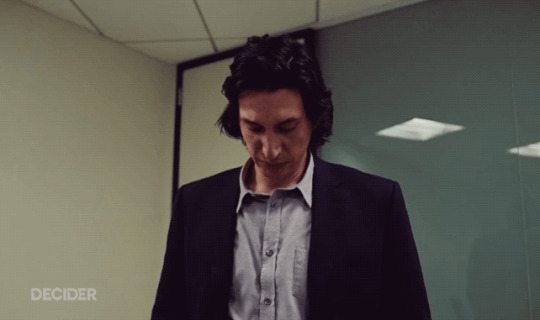
BEST ACTRESS: Sure, give it to Zellweger.
BEST S. ACTOR: Brad Pitt/Joe Pesci
Now, if I choose anyone other than Pitt, we would be missing his extraordinary speeches, which quite frankly have been the best part of this award season. The only respite from the otherwise dull and neverending award shows. However, that being said, Joe Pesci really did give the performance of a lifetime, and not to be crass, but how many of those does he have left? He carries every scene of a 210-minute film, how do you not give him the Oscar? But then again, take Pitt’s character out of the film and you really have nothing to go on. The relationship between the two men is at the center of the film and by consequence Pitt’s winning performance. At this point, the statue is in Pitt’s pocket, but a Pesci win would be a pleasant surprise.
BEST S. ACTRESS: Laua Dern/Scar Jo/Florence Pugh
I am of the category of ‘Give Laura Dern ALL the freaking awards!”. She deserves the world served to her on a gold platter. Yet, I am big enough to admit this wasn’t her prime performance, for that I would refer you to look to the past 20+ years of her career. Yes, that speech made me stand up from my seat applauding a-la Meryl Streep meme, but in this particular year for this category, I would wish the recognition go elsewhere. Here’s my case for two actresses who are nominated because delving to those who got snubbed is still too painful.
Nothing broke me like Scarlett Johanson’s portrayal in Jojo Rabbit. To most, our mothers are these out of this world, extraordinary superheroes, and at the same time, they are still flawed humans who will fall and make mistakes. That is exactly how ScarJo plays it. You recognize the compassion and love of a mother as well as the strength and basic humanity of a real person. The duality of her performance really merits recognition.
On the other hand, after a few too many portrayals of Amy by countless actresses, Florence Pugh is the first iteration of the character that actually offers a redeeming version of a mostly hated character. Pugh plays Amy BIG, but just the right amount. She does not overdo it in the dramatics but mutes it with subtleties in her face that only Pugh can convey.
BEST ORIGINAL SCREENPLAY: Marriage Story
I could easily give this to Parasite. Like I wrote before, this film is perfection in every way. HOWEVER, since the moment I watched Marriage Story, I have not been able to stop thinking about it. Every single scene, the poignancy, the speeches and the heartbreak of it all. As a child of divorce, I commend Noah Baumbach for writing from both perspectives and without taking sides. I appreciate that by the end, it really doesn’t resolve anything but it simply ends at a point, much like in real life. You get on. I love everything about it, the pacing, the word choices, the comedy in the heartbreak, I love the unspoken parts of it as much. I could start quoting it or pointing out scenes that are forever etched in my memory but I would never finish.
BEST ADAPTED SCREENPLAY: Little Women
It is no coincidence that my adapted screenplay choice is the work of Baumbach’s partner, the incomparable Greta Gerwig. Since Lady Bird, I vowed to follow Gerwig till the day I die. With Lady Bird, she completely obliterated the wall that divided my life from the world of my dreams, Hollywood. She was telling MY story. With Little Women, she did the same, only in a different way. She told the story I grew up with, the story that shaped me, in the way that I always imagined it. It sounds fantastical and overexaggerated, but I would not be surprised if I wake up one day to find that Greta was just a figment of my imagination and I had dreamt a magical dream in which she put all my thoughts on paper and transformed them into a film. To quote Beauty and the Beast, Little Women is a tale as old as time, it has been adapted numerous times for both TV and film and never has it been told like this. This script is literally the definition of what the best adapted screenplay should be.
CINEMATOGRAPHY: 1917
That night sequence illuminated only by the fire and the flares/explosions. That’s it. That is my argument for it. That sequence is the winning element.

#Academy Awards#Oscars#Adam Driver#Scarlett Johanson#Laura Dern#Marriage Story#1917#Little Women#Greta Gerwig#Noah Baumbach#Brad Pitt#Florence Pugh#Parasite#Bong Joon Ho#Joe Pesci#Rene Zellweger#Jojo Rabbit#Lady Bird#EW#Entertainment Weekly
0 notes
Photo

Blade Runner 2049 REVIEW
Blade Runner 2049 is probably the best looking film I’ve seen my entire life. Visually, this movie is a masterpiece; a dystopian future never looked so dreadfully beautiful. I find this film better than its predecessor, Blade Runner (1982), which is considered a cult classic right now. BR 2049 has a far better story, more interesting and well-developed characters, and just all in all a beautiful film. Even though it’s a sequel, this movie stands on its own. You don’t need to know anything about the first film to appreciate this one which is excellent. But seeing the first film before entering into this one would give you a much better experience and a greater sense of appreciation towards the story of this film. I get that some people would find this film boring or too long. It’s 2 hours and 43 fucking minutes. This film is a monster. Some scenes are just Ryan Gosling walking around and investigating. The movie takes a lot of time on telling its story. But the way it was presented visually, I doubt you’d feel bored just by feasting your eyes on how stunning this film looks. Every frame can be a potential wallpaper for your laptop. Legendary Roger Deakins (cinematographer) as usually killed it behind the camera. What is up with Ryan Gosling always in great movies every year? [(La La Land and The Nice Guys (2016), The Big Short (2015), Old God Forgives (2013), The Place Beyond The Pines (2012) DRIVE (2011)] I bet this dude’s gonna be in my favorite movie of the year AGAIN next year. Denis Villeneuve (director) is a revelation, a master, a genius, a god. This guy has consistently made great movies back to back to back. Protect him at all cost. BLADE RUNNER IS THE SHIT 11/10
3 notes
·
View notes
Text
Sicario is such a friggin goofball, racist movie but mannnnn……the cinnamontography is to die for and that “dining table” scene was out of control.
p.s. idk what it is with me and dinner table scenes but i just love them so much for settings of tension. for some reason, pauses made at a dinner table be pregnant with quadruplets and octuplets lmaooo
0 notes